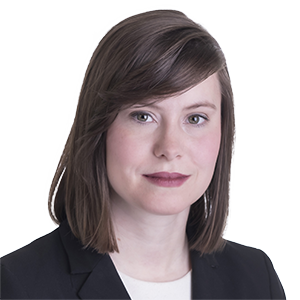In Chanel Limited et al v Lam Chan Kee Company Ltd et al, 2015 FC 1091, the Federal Court of Canada recently dealt traders in counterfeit goods another blow, granting a judgment of $380,000 – including $250,000 in punitive and exemplary damages – against two corporations and an individual defendant, Annie Lam, relating to their retail store business “Lam Chan Kee”.
Of particular note, the Court rejected Ms. Lam’s submission that the matter must go to trial because of a credibility issue raised by contradictory affidavit evidence. Instead, the Court found it had sufficient basis to grant judgment under the Court’s summary trial procedure, which allows for a proceeding to be adjudicated in a summary manner on affidavit evidence and out-of-court cross-examinations. Judgment was also granted in default against the two corporations, though the Court dismissed the action against Ms. Lam’s husband, absent evidence of his personal involvement in the business.
Summary trial – self-serving evidence is not enough to force a trial
Using the summary trial rules, still somewhat in their infancy with the Federal Court, Justice Martineau explicitly considered and weighed the affidavit evidence of three witnesses filed on behalf Ms. Lam, including from Ms. Lam herself. This evidence alleged a transfer of the Lam Chan Kee business from one corporate defendant to another and from Ms. Lam to her adult children, which Ms. Lam argued relieved her of liability. When this evidence did not align with evidence provided by the plaintiff, Ms. Lam claimed a full trial was required.
The Court disagreed, finding that simply raising the issue of credibility is not sufficient to make the matter unsuitable for summary trial. Describing the evidence put forward by the individual defendants as “self-serving and inconclusive”, pointing to inconsistencies that arose during cross-examinations and noting the lack of persuasive corroborative documentation relating to the alleged transfer, the Court determined that on a balance of probabilities Ms. Lam continued to operate the Lam Chan Kee business through the corporations, and was therefore liable.
While the Federal Court has granted judgment under its summary trial rules on several occasions previously, and has affirmed its ability to weight conflicting evidence under such summary procedure, this is believed to be the first time that the Court has actually weighed conflicting evidence and assessed credibility while still coming to a final judgment under the summary trial procedure.
The Court’s willingness to assess credibility under summary trial stands in contrast to the old summary judgment rules, where any whiff of credibility would send the matter to a full trial. The result in this case, which is consistent with the Supreme Court of Canada’s recent endorsement of summary procedures in Hryniak v. Mauldin, 2014 SCC 7, is therefore to be applauded as increasing access to affordable justice and proportionality for disputes with purveyors of counterfeit goods.
Landlord liability?
Also of potential interest is whether the Court in this case has opened the door – albeit just a crack – for landlord liability resulting from the sale of counterfeiting goods in Canada. While declining to rule with respect to Chanel’s argument that Ms. Lam was in any event liable for the activities taking place at the Lam Chan Kee business as the owner and landlord of the premises, the Court did appear to factor in that “Madame Lam continued to be the owner and landlord of the Premises” as part of its analysis relating to Ms. Lam’s personal liability. It will be interesting to see if this statement gives room for arguing the broader concept of landlord liability in counterfeiting cases under Canadian jurisprudence.
Chanel was represented by Karen MacDonald.




